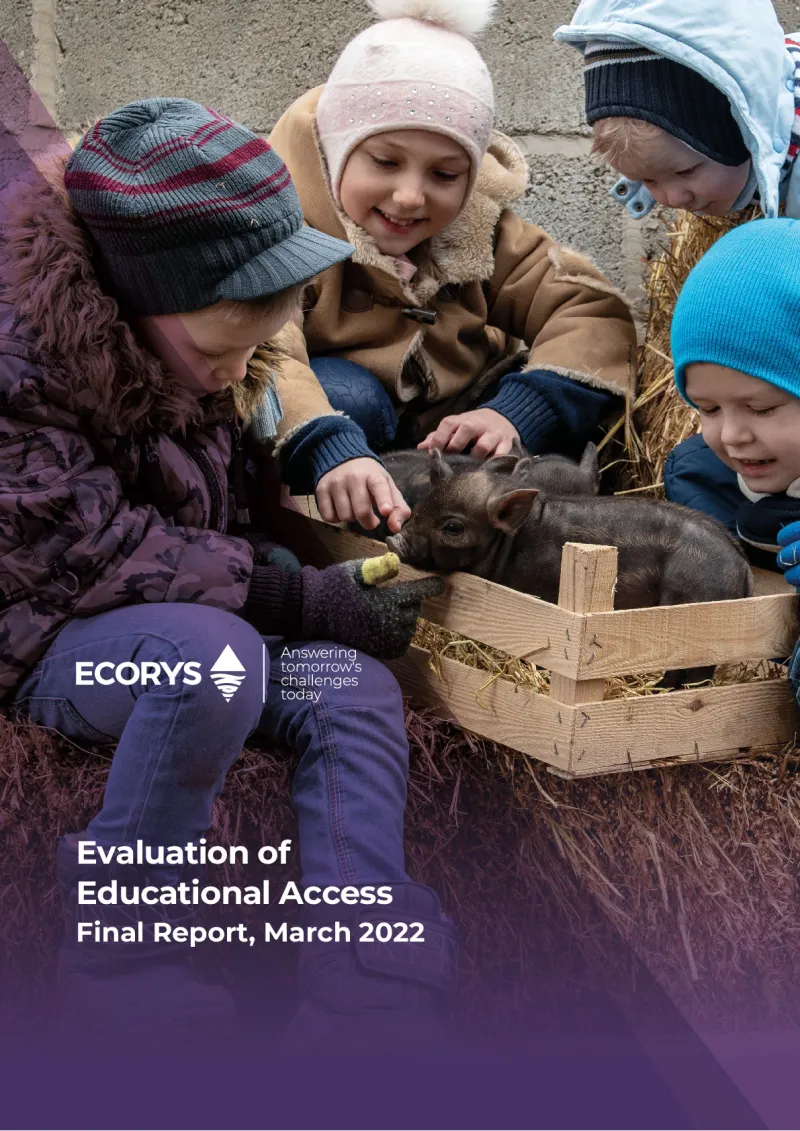Evaluation of educational access in England
- Evaluation
- Long-term Vision for Rural Areas
- Smart Villages
- Jobs, Growth and Equality in Rural Areas
- Evaluation
This evaluation explores how Defra's educational access option facilitates farm and wildlife site visits for school pupils, aiming to link farming, food production, conservation and the environment with curricular skills development.
- Other
- 2014-2022
- Socio-economic impacts


This report evaluates Defra’s educational access option, part of the agri-environment schemes, focusing on the non-residential outdoor learning offered to school pupils at farm and wildlife sites. The evaluation was commissioned by Natural England in 2021 and was completed in 2022.
The evaluation aims to assess best practices in outdoor learning, compare these to current educational access delivery and provide recommendations for improvement. The key objectives are the following:
- To understand the optimal content and delivery of environmental/food production and other areas of the curriculum that can be delivered outdoors on educational access sites and develop a list of the most relevant curriculum topics and a summary of successful pedagogical approaches that could be utilised at such sites.
- To record, review and summarise the content and pedagogical approaches of environmental education provision funded by the current stewardship scheme and the factors that may affect delivery (including characteristics of the provider and the site).
- To analyse current content and pedagogical approaches with respect to optimal approaches and the characteristics of providers and their farms.
- To develop recommendations that support improvements to educational access.
The overall methodological approach to the evaluation was informed by the specifications in the invitation to tender and consisted of (a) a review of programme documentation to inform the development of research questions and evaluation framework, (b) a literature review of best practice in outdoor learning, focusing on curriculum and pedagogy, (c) an online survey and in-depth interviews with educational access providers to understand current practice, and (d) an analysis comparing current delivery to best practice in outdoor learning, so to inform recommendations for future developments. As requested by Natural England, this report outlines the methodology used in the evaluation and presents overview findings from each research task.
Limitations included a small sample size and the inability to observe visits firsthand or consult directly with schools and pupils, making it difficult to generalise the findings across all educational access sites.
The evaluation highlighted several key insights into the delivery and impact of the educational access option. The majority of providers (95%) stated that their primary motivation for participating in the educational access scheme was to help children and young people learn about nature and the environment, with 78% specifically interested in promoting farming knowledge. 83% of the visits were led by providers, while only 14% involved significant teacher participation in the delivery process. Short, practical activities that were hands-on and outdoor based were seen as highly successful, with 88% of providers reporting positive engagement from pupils, particularly in subjects such as science (93%), geography (85%) and history (68%). While 91% of providers linked activities to science curricula, fewer managed to incorporate other subjects, such as English (15%) and art (12%), suggesting room for improvement in cross-curricular integration.
Despite the success, significant barriers were identified. Transportation costs were mentioned by 61% of schools as the main barrier to participation. In addition, 74% of providers highlighted the difficulty of maintaining consistent communication with schools due to staffing and time constraints. Only 49% of teachers conducted pre-visits to sites, limiting the potential for co-planning and co-delivery of the educational content.
Providers noted that their success was measured primarily by pupil enjoyment (93%) and engagement (88%). However, academic outcomes were harder to measure, with only 28% of providers tracking specific curriculum outcomes. Recommendations: the report calls for better curriculum-specific training for providers, enhanced support for schools, and consideration of removing or adjusting the cap of 25 visits per provider to increase participation. Expanding the educational access criteria to encompass more diverse groups could further enhance the program's reach.
Author(s)
Rhiannon Cottrill, Jenny Molyneux, Valdeep Gill, Mariya Yanishevskaya, Helen Main, Beki Van Zanten, Samuel Greet, Mark Leather
Resources
Documents
Evaluation of Educational Access
(PDF – 4.87 MB – 144 pages)